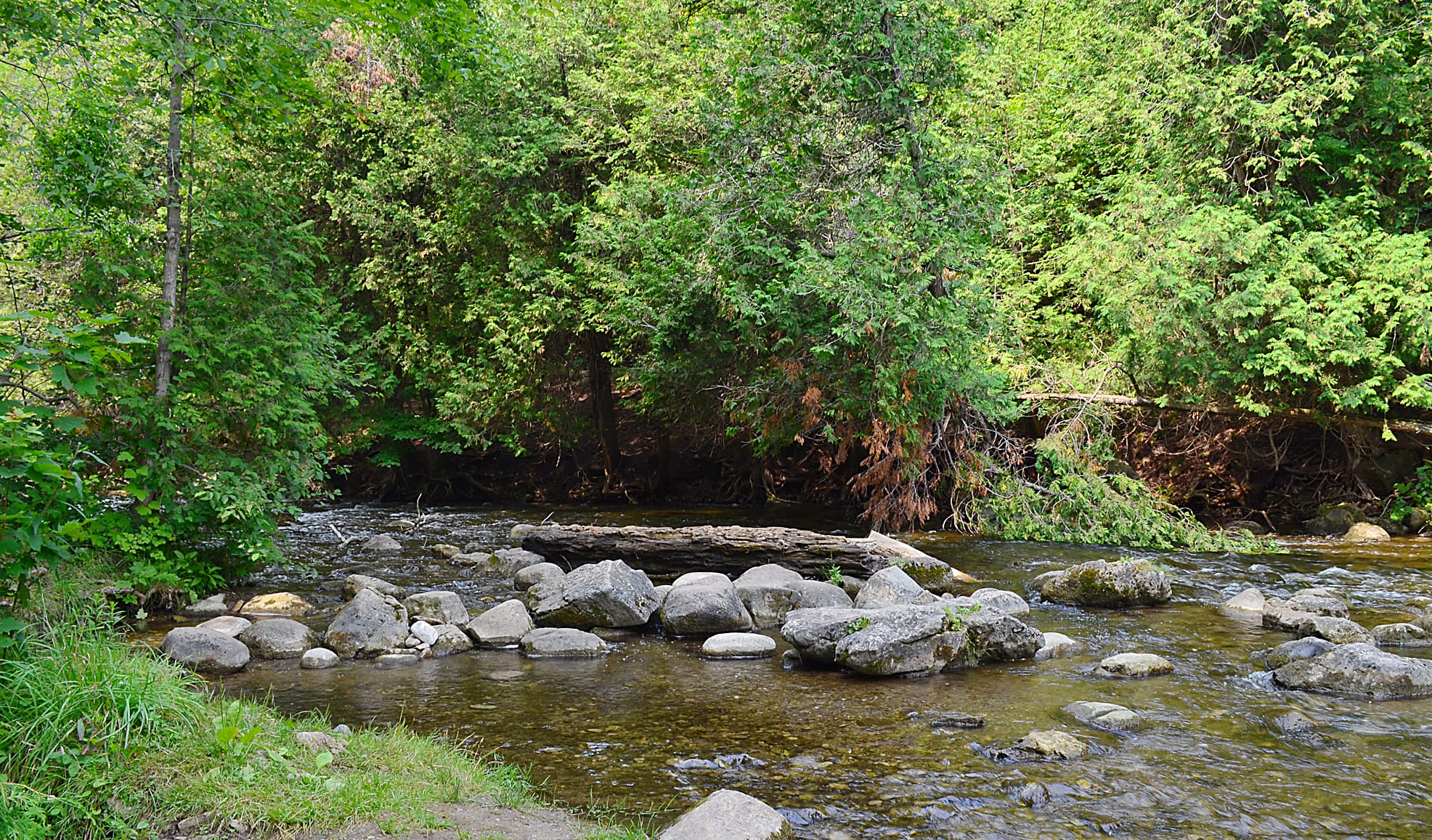ERIN – Credit Valley Conservation (CVC) is being hired by Erin to monitor the effects of flushing treated wastewater into the West Credit River.
An “outfall” for the town’s new wastewater treatment plant will be located off Winston Churchill Boulevard where the effluent will be emptied.
Town spokesperson Lavina Dixit was unable to answer a question from the Advertiser about how many litres of treated effluent could be emptied into the river daily.
“The daily output will depend on how many new homes are occupied and when,” Dixit wrote in an email.
Three monitoring stations, one upstream and two downstream, will monitor surface water every 15 minutes, capturing conditions such as temperature and dissolved oxygen levels.
The CVC will also conduct fish, microscopic invertebrate, and water sampling, and take field measurements using teams ranging between two and four people.
Sampling of fish and invertebrates will happen annually, and water samples and field measurements will be taken monthly.
Monitoring of the river, the specifics of which are detailed in a Receiver Monitoring and Mitigation Plan approved in July, is required by the province through an Environmental Compliance Approval.
The Coalition for the West Credit River, a public interest group dedicated to environmental protection, has been a strong advocate for monitoring river conditions, as well as the cooling of water before it reaches the river — another requirement included in the province’s compliance approval.
Erin project manager Khalid Rahman presented council with a brief report on a recommendation to award a five-year contract to the CVC for river monitoring on Aug. 17.
The total five-year cost is $866,624 with tax-in, including a contingency of $130,319.
Development charges collected by the town will pay for the $381,123 cost associated with the first two years.
During the first year, CVC will get real-time water quality monitoring stations designed and built, according to a report signed by CVC watershed monitoring manager Jon Nodwell.
“The remainder of the budget will be for ongoing equipment maintenance, data quality control and monitoring,” Nodwell’s report states.
It’s expected the remaining $355,182 cost for the next three years of the project will start being passed onto residents using the system through utility bills in 2027.
Councillor Bridget Ryan said the $130,319 contingency seems “a little high.”
Rahman said the standard would be 15 per cent, but echoed the Nodwell report, which states there are “many unknowns” in a project requiring a “novel approach.”
Asked about insurance on the monitoring stations — Erin will own the stations — Rahman said, “we don’t have any plan right now.”
“These are so remote areas … usually people never go there,” he added.
Fire chief Jim Sawkins, who has become the de facto head staffer since former CAO Nathan Hyde’s departure earlier this month, suggested staff inquire about coverage. The town will be on the hook for all replacement and repair costs should the stations be damaged.
Council carried the recommendation to finalize a contract with CVC.
River monitoring will likely begin in September, according to the CVC.
Before the effluent is emptied into the river, baseline data will be collected by the CVC for 18 months, Erin’s spokesperson said.
That data can be used to gauge effects on the water and aquatic life over time.



